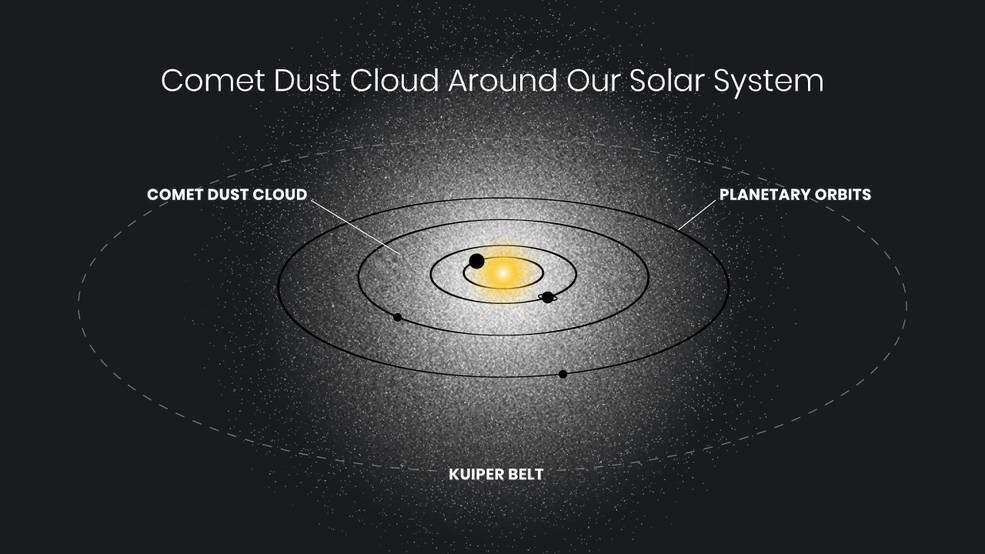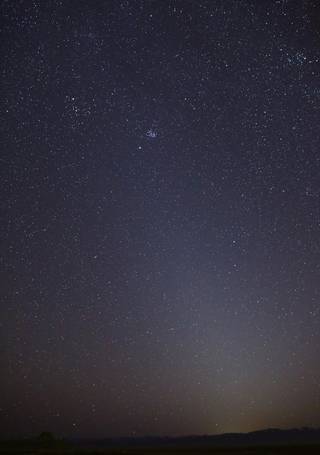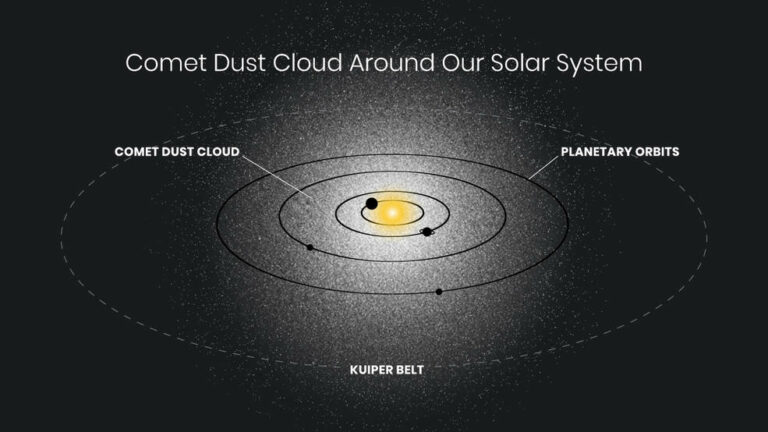Hubble Discovers a Ghostly Glow Around Our Solar System
The night sky appears pitch dark to the casual spectator, but for a tapestry of sparkling stars and the illumination of the waxing and waning Moon. How dark is dark, though?
In an ambitious experiment named SKYSURF, scientists opted to examine 200,000 photographs from NASA’s Hubble Space Telescope and took tens of thousands of measurements on these images to search for any lingering background glow in the sky.
This would be any remaining light after eliminating the glow from our solar system’s plane’s planets, stars, galaxies, and dust (called zodiacal light).
Following this inventory, researchers discovered a minuscule surplus of light, about equal to the constant brightness of 10 fireflies dispersed throughout the whole sky. That would be like to shutting off all the lights in a room with shutters only to see a spooky glow emanating from the walls, ceiling, and floor.

Credits: NASA, ESA, and Andi James (STScI)
According to the researchers, one explanation for this lingering glow is that our inner solar system contains a flimsy sphere of cometary dust that is entering the solar system from all sides. The glow is thought to be caused by sunlight bouncing off this dust. This dust shell, if it exists, may add something new to the solar system’s known design.
This theory is supported by the fact that another group of astronomers measured the sky backdrop in 2021 using information from NASA’s New Horizons probe. The New Horizons spacecraft just entered interstellar space after passing past Pluto in 2015 and a tiny Kuiper belt object in 2018. 4 to 5 billion kilometers separated New Horizons from the Sun when the observations were taken. The planets and asteroids, where there is no pollution by interplanetary dust, are far away from this.
Compared to what Hubble saw, New Horizons saw something a little fainter that seemed to come from a source further away. Additionally unidentified is the origin of the background light observed by New Horizons. There are many possibilities, from the dark matter disintegration to a massive undetected population of far-off galaxies.

Credits: NASA/Bill Dunford
According to Tim Carleton of Arizona State University, “If our research is true, there’s another dust component between us and the distance where New Horizons conducted measurements, which suggests this is some type of additional light coming from inside our solar system” (ASU).
“We believe that the leftover light is a local phenomena that is not from far outside the solar system because our measurement of it is greater than New Horizons’. It may be a brand-new component of the solar system that has not yet been quantitatively measured but has been theorized “Carleton said.
ASU astronomer Rogier Windhorst, a seasoned Hubble user, had the original inspiration to compile Hubble data and search for any “ghost light.” “In the photos from Hubble’s collection, more than 95% of the photons originate from locations fewer than 3 billion miles away from Earth. Since Hubble’s earliest beginnings, the majority of Hubble users have ignored these sky-photons because they are more interested in the dim, distinct objects, such stars and galaxies, in Hubble’s photographs “Windhorst stated. However, these sky-photons have significant information that can be decoded because of Hubble’s exceptional capacity to monitor weak brightness levels with great accuracy throughout the course of its three-decade lifespan.
Project SKYSURF benefited from the work of numerous graduate and undergraduate students, including Rosalia O’Brien, Delondrae Carter, and Darby Kramer from Arizona State University, Scott Tompkins from the University of Western Australia, Sarah Caddy from Macquarie University in Australia, and many more.
The team’s research papers are published in The Astronomical Journal and The Astrophysical Journal Letters.
Do not forget to share your opinion with us to provide you with the best posts !




0 Comments